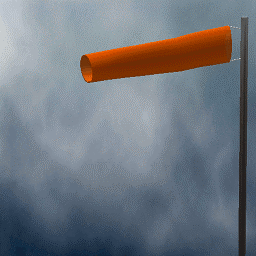One of the most important duties of the first attending Incident Commander (IC) will be to gather as much information as possible. Externally this should start before arrival at incident and continue until the incident is under control.
The wind can have a devastating effect on ventilated fires in high rise buildings so the current wind conditions should be observed on the way to an incident. Are trees swaying? Is rubbish being blown about the streets? are telephone cables swaying? All give indicators to how the wind is at a low level. This should always be multiplied up for taller buildings. Some FRS even obtain and distribute to operational crews, daily weather (wind) forecasts for the next 24 hours.
|
Remember that there can also be situations where there is very little wind at ground floor level but a strong breeze at higher levels. Wind can be unpredictable and can change velocity and direction over relatively short periods |
External temperature is also important. The 'Stack (or Chimney) effect', where temperature differences between inside and outside a building can create an airflow when openings are created, can be greatly enhanced on particularly hot or cold days.
Accurately identifying the incident floor(s) will enable a safer deployment of reconnaissance and assessment teams into the building. Getting this wrong has had catastrophic results in the past. (Peters Hill Court : Strathclyde, UK 11 Nov. 2004)
As the building comes into sight, you may be afforded the opportunity to view various sides of the structure and from a distance obtain a 'fuller view' of the building. Look the the most obvious signs of where the incident is actually located (flames, blackened or broken glass) as this may not always be where smoke is observed leaving the building
At night use powerful torches to identify the incident location from outside. Be aware that it is nearly impossible to tell the colour of smoke at night. It tends to always look white.
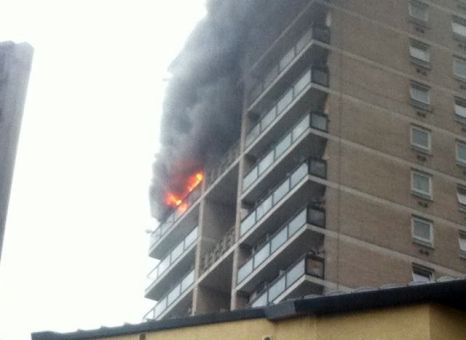 |
As the First attending IC arrives at the incident he must identify and instruct on a suitable location for the appliance. This must NOT be directly under where the incident is suspected to be, due to the risk of falling debris and glass. It is better to park further away and run additional lengths of hose to any riser that to have the appliance or its operator involved, should burning debris or glass fall.
The First Attending IC must now to do a thorough but QUICK external observation of all the faces of the building where possible. If any faces are out of view, as soon as possible, nominate an external observer and send them to a location where they may get a better view.
This initial observation should assist in identifying the incident floor. If smoke or flame is observed, understand what it is telling you:
Where is the incident ? (not just 'where is the smoke')
Who is trapped and where are they ? ( and are they actually trapped or in any danger)
Has it breaches any external elements (broken windows, burnt out frames)
Is it obviously spreading externally? Where to? ( Multiple fire floors or compartments)
Is it turbulent or energetic (flashing over, wind driven)?
How dense is the smoke? (thick smoke may be O2 restricted and superheated, Spread)
Is there any falling, burning debris?
Where is the smoke being blown? (Wind direction and velocity. Is it gusting)
Is smoke being blown back into the building? (through windows or AOV's affecting means of escape)
Are nearby buildings creating unpredictable or accelerated wind patterns?
Look for change in the dynamics of the incident.
Downward smoke travel is COMMON at lower levels and is caused by the higher velocity winds hitting the upper levels and being forced downwards. This downward smoke travel may also cause or indicate vertical, downward fire spread
DO not be fooled into thinking that no external signs of fire or little or no smoke means that it is a 'small' incident. High rise buildings use multiple compartmentation and are often hermetically sealed. There may be a fully involved internal compartment on fire within the building with no windows (often the case with kitchens, bathrooms and utility areas)
If you have access to a Thermal Image Camera (TIC) and providing it has a suitable range use it to externally assess the location of an incident. Look for hot windows, remembering that the TIC will not be able to see into flats through glass. Look for heat in any smoke plume as this will indicate a fire spread mechanism. Look at windows on opposite sides of the building to where smoke is observed as wind may be driving it through the building. The site author has attended what looked like a heavily smoked, developing fire on the 15 floor of a residential tower block. First attending crews were preparing for a full 3 line internal attack. When observed through a TIC (from over 300m away) it became obvious that it was actually a rather smokey barbecue on a balcony. |
 |
The external observation plays a key role in the safe commitment of firefighters into the building and ultimately into the incident area. It is recommended that once the First attending IC has carried out his initial external observation that he immediately appoints an External Observer (EO) and that the role of the EO is to observe the incident and the status of the occupants of the building. The EO must have communications with the IC and the Sector commander (SC) Bridgehead. The EO should be someone able to correctly interpret what they observe and report this to the IC.
This role is a very different to that of any external Safety Observer or Safety Officer who may be put in place to control or supervise the areas below an incident.
The external observations of the IC must be quick but it is important that as much information is gathered and integrated into any tactical plan. Ongoing observations must be relayed by the EO.
Internal
The key internal observation is that of SMOKE SPREAD. Smoke spread demarks the size of the incident and controls the approach to the suspected incident floor. The normal intelligence gathering process must be followed (interrogating and AFD system, occupants and evacuees etc). from this an INFORMED estimate of the best location for the bridgehead must be made. This should be three floors below the lowest affected floor. Risk assess the use of lifts. If possible and it is safe use them as they will get you there quickly and with little physical effort. If any doubt exists, walk up the stairs.
| At the bridgehead it is important to use all your senses to inform any approach to the suspected incident floor. Sight and smell are critical. Some FRS procedures will require crews to search for the incident floor in Breathing Apparatus, but this is removing one of the Firefighters most important senses, SMELL. The sence of smell can give you direction by using changes in intensity. It can often inform as to what is on fire. | 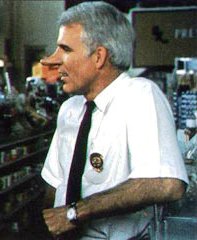 |
The initial crew must be a minimum of three, one of whom will be designated Sector Commander (SC)- Bridgehead, should advance towards the incident floor with extreme caution. Advantage should be made of any vision panels. Door temperature checks should be carried out and a TIC used . Safe door opening procedures should be used at every door. This initial crew must NEVER advance into any area that is smoke contaminated. They will need to identify any doors leading to the compartment that is thought to be involved.
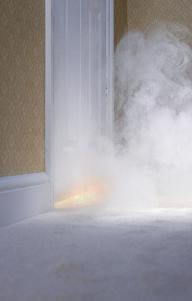
Careful checking of these 'involved' doors and their integrity will help decide the tactical approach to the incident. A very hot door is a sign of imminent failure and crews should withdraw as soon as possible.
Observe any smoke movement or noises (sucking or blowing). In a High rise scenario, these may be the obvious (imminent) signs of flashover or backdraft, BUT they may be indicative of an equally dangerious wind driven (positive or negative pressure) fire.
At any initial deployment onto the incident floor, the key role of that crews commander is to ensure the tenability of the environment for the crews working there. Once the 'suspected compartment' is identified the SC should assess what has been observed internally together with updated information from the external observer. From this, different tactical options can be validated. These may include immediate withdrawall, further reconnaissance and assessment or initial evacuation of areas deemed to be at direct risk. The SC must carefully and fully breif crews on what is required an agreed immediate withdrawal signal confirmed.
| During this phase of the incident crews are potentially at greatest risk and it is the over arching responsibility of the SC to ensure that everything is done to continually assess the incident and foresee any failures or deterioration that may endanger crews. Internal and external observation is critical. | 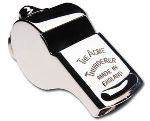 |
After this initial deployment crews may withdraw to the Bridgehead (if that supports the chosen tactic) but whenever possible and only if the building design supports it, leave a crew in a safe position (protected by compartmentation leading to a stairwell) to observe the risk area of the incident floor.
This crew must be in communication (radio) with the SC
 This link will take you away from www.highrisefire.co.uk Please be aware that we do not necessarily endorse or support the views, opinions and expressions of this site !
This link will take you away from www.highrisefire.co.uk Please be aware that we do not necessarily endorse or support the views, opinions and expressions of this site !
